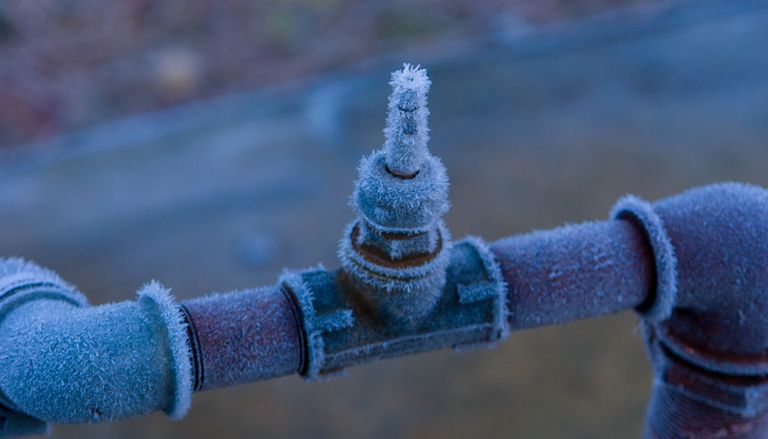How to Protect Pipes from Freezing Damage: Important Guidance
How to Protect Pipes from Freezing Damage: Important Guidance
Blog Article
Right here down the page you'll find a bunch of professional data in relation to How to prepare your home plumbing for winter weather.

Winter can ruin your plumbing, especially by freezing pipelines. Below's just how to prevent it from happening and what to do if it does.
Introduction
As temperatures decrease, the danger of icy pipelines boosts, potentially leading to pricey repair services and water damage. Recognizing how to stop icy pipes is essential for home owners in cold environments.
Avoidance Tips
Shielding at risk pipes
Cover pipes in insulation sleeves or make use of warm tape to secure them from freezing temperature levels. Focus on pipelines in unheated or outside areas of the home.
Heating strategies
Keep interior areas sufficiently heated, particularly locations with plumbing. Open cupboard doors to permit warm air to distribute around pipelines under sinks.
Just how to identify icy pipelines
Seek decreased water flow from faucets, uncommon smells or sounds from pipelines, and noticeable frost on subjected pipes.
Long-Term Solutions
Structural modifications
Consider rerouting pipes far from exterior walls or unheated areas. Add additional insulation to attics, cellars, and crawl spaces.
Upgrading insulation
Buy high-grade insulation for pipelines, attics, and wall surfaces. Appropriate insulation helps preserve consistent temperature levels and decreases the threat of frozen pipes.
Safeguarding Exterior Plumbing
Yard hose pipes and outside faucets
Separate and drain yard hoses before winter months. Install frost-proof spigots or cover exterior faucets with shielded caps.
Understanding Icy Pipelines
What causes pipes to ice up?
Pipes ice up when revealed to temperature levels listed below 32 ° F (0 ° C) for expanded periods. As water inside the pipes freezes, it expands, putting pressure on the pipe wall surfaces and possibly creating them to burst.
Risks and damages
Frozen pipes can lead to water system interruptions, home damage, and expensive fixings. Burst pipelines can flooding homes and cause comprehensive architectural damage.
Indicators of Frozen Piping
Identifying icy pipelines early can stop them from breaking.
What to Do If Your Pipelines Freeze
Immediate activities to take
If you suspect frozen pipelines, keep taps open up to alleviate pressure as the ice melts. Utilize a hairdryer or towels soaked in warm water to thaw pipes slowly.
Final thought
Avoiding icy pipes requires positive measures and fast feedbacks. By comprehending the reasons, signs, and safety nets, property owners can secure their pipes during cold weather.
6 Proven Ways to Prevent Frozen Pipes and Protect Your Home
Disconnect and Drain Garden Hoses
Before winter arrives, start by disconnecting your garden hoses and draining any remaining water. Close the shut-off valves that supply outdoor hose bibs and leave the outdoor faucet open to allow any residual water to drain. For extra protection, consider using faucet covers throughout the colder months. It’s also important to drain water from any sprinkler supply lines following the manufacturer’s directions.
Insulate Exposed Pipes
Insulating your pipes is an effective way to prevent freezing. Pipe insulation is readily available at home improvement stores and is relatively inexpensive. Pay close attention to pipes in unheated areas such as the attic, basement, crawl spaces, or garage. Apply foam insulation generously to create a buffer against the cold. You can also wrap your pipes in heat tape or thermostat-controlled heat cables for added warmth.
Seal Air Leaks
Inspect your home for any cracks or openings that could let in cold air. Seal any holes around the piping in interior or exterior walls, as well as the sill plates where your home rests on its foundation. Additionally, make sure to keep your garage door closed unless you’re entering or exiting. Leaving it open creates a significant air leak that can lead to frozen pipes.
Allow Warm Air Circulation
During cold snaps, it’s essential to allow warm air to circulate evenly throughout your home. Leave interior doors ajar to promote better airflow. Open kitchen and bathroom cabinets to help distribute heat consistently around the rooms. If you have small children or pets, be sure to remove any household chemicals or potentially harmful cleaners from open cabinets for safety.
Let Faucets Drip
A small trickle of water can make a big difference in preventing ice formation inside your pipes. When temperatures drop significantly, start a drip of water from all faucets served by exposed pipes. This continuous flow helps prevent the water from freezing. Additionally, running a few faucets slightly can relieve pressure inside the pipes, reducing the chances of a rupture if the water inside does freeze.
https://choateshvac.com/6-proven-ways-to-prevent-frozen-pipes-and-protect-your-home/

I came across that blog entry on How to Prevent Your Pipes From Freezing while doing a search on the internet. In case you appreciated our post kindly consider to share it. Thank you for your time spent reading it.
Click Here Report this page